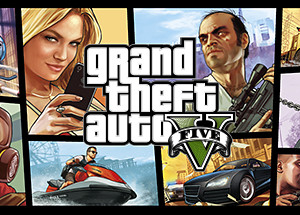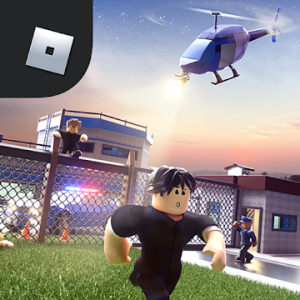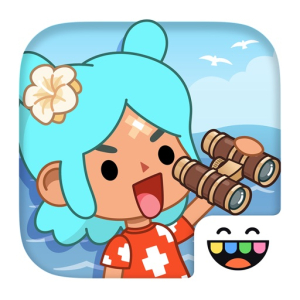When I first booted up Gorilla Tag, I felt a mix of excitement and curiosity that was unmatched by any previous encounter with virtual reality games I had experienced. As someone who has always enjoyed pushing the boundaries of digital experiences, the idea of embodying a nimble primate in a world that defies gravity was an irresistible challenge....
Gorilla Tag
When I first booted up Gorilla Tag, I felt a mix of excitement and curiosity that was unmatched by any previous encounter with virtual reality games I had experienced. As someone who has always enjoyed pushing the boundaries of digital experiences, the idea of embodying a nimble primate in a world that defies gravity was an irresistible challenge. I dove headfirst into this immersive environment without any preconceived notions about what the game would offer. The moment I donned my headset, the vibrant jungle-like settings and the playful energy of the other players instantly engulfed me in an atmosphere that was both invigorating and inviting.
My initial steps in Gorilla Tag were filled with a sense of wonder. The minimalist design and the straightforward mechanics allowed me to appreciate the core concept: using my arms to propel myself around like a gorilla. Each movement felt genuine and rewarding, tapping into the natural human instinct to explore and jump. The game quickly rewrote my definition of interactivity in virtual reality. The challenges were not subtle, yet they were instantly gratifying. I realized that every leap, swing, and scramble through the digital foliage was as much about physical exertion as it was about relishing the simplicity of the mechanics. The catchy background tunes and the organic sound effects added dimension to the overall experience, making it more than just a game – it became a physical poem of digital expression.
This multifaceted experience left me with many questions and reflections about the nature of digital play. I began to appreciate not only the mechanics but also the underlying philosophy that the developers embraced: that fun could be found in raw, unfiltered interactivity. The blend of natural movement with digital charm created a memorable adventure that continues to leave a mark on my VR journey. As I progressed, I encountered layers of complexity hidden behind the apparent simplicity, each layer inviting deeper exploration. This is just a glimpse into my session with Gorilla Tag, a game that constantly pushes the envelope of what interactive VR experiences can be.
Embracing the Unique Movement Dynamics
From the moment I experienced Gorilla Tag’s movement mechanics, I was captivated by the raw authenticity and the sense of physicality that the game instilled. The core concept of moving solely through the use of one’s arms is both challenging and liberating, requiring a level of precision and energy that grows with each session. I remember the initial awkwardness, as my familiar mode of navigation through virtual spaces was suddenly replaced by an entirely new paradigm where every swing, duck, and leap mattered. It felt as if the game was inviting me to rediscover my body’s capabilities in a virtual environment, blending physicality with digital thrill in a way that few other VR experiences have managed.
Each session encouraged me to embrace the unconventional physics and rethink how I interact with my surroundings. The game’s commitment to realistic momentum and energy conservation meant that every movement demanded intent and concentration. I experienced moments of delightful clumsiness as I attempted to coordinate my limbs, only to gradually evolve my technique over time. This evolution wasn’t simply about mastering an in-game mechanic; it was a journey of learning how to channel natural human movement into a virtual space where the boundaries of physics were both honored and playfully subverted. The dynamic interplay between gravity and my movements was an endless source of excitement and exploration.
The experience was also deeply rewarding from a physical standpoint. Unlike many VR games, Gorilla Tag required an inherent commitment to bodily engagement, making every minute a mini-workout session while immersing me in its playful environment. I felt a sense of exhilaration every time I successfully executed a tricky maneuver, which, in turn, fueled my determination to try something new. This unique movement dynamic not only elevated the gameplay but also redefined what it meant to truly interact with a digital world. The game successfully blurred the line between virtual skill and physical prowess, leaving me eager to overcome more challenges and push the limits of my coordination.
The Thrill of Swinging Through VR
Every time I engaged with Gorilla Tag, the thrill of swinging through the vast virtual playground resonated deeply within me. The experience transcended the typical boundaries of video gaming and elevated it into a form of digital acrobatics that was both exhilarating and liberating. There was a beauty in the simplicity of the mechanics—the whole game was about pure, unadulterated motion. I found myself completely drawn to the rhythm of my own movements, as I navigated tree lines, rocky formations, and open spaces, each element compelling me to push further. The virtual environment was intelligently designed to encourage freedom of movement. Its structure allowed for a seamless integration of parkour-like maneuvers and open-world exploration, creating a sense of boundless opportunity in every session.
The mechanics of swinging in Gorilla Tag felt incredibly organic. As I propelled myself off surfaces and swung from predetermined anchors to new areas, the sensation was remarkably akin to real-life physical exertion. The game’s design rewarded intuitive movements, and I soon realized that mastering the art of gliding and elevating myself to higher platforms was an entirely satisfying pursuit. Every arc of my swing was punctuated by the rush of wind and the natural hum of my own exertion, making me appreciate both the physicality of the act and the thoughtful design behind it. There were times when I felt as though I was performing an aerial dance, fully immersed in the art of movement, expressing my own unique style without the constraints of traditional game controls.
This immersive swinging mechanic, in particular, was a refreshing divergence from the more common locomotion styles found in VR titles. It invited me to reimagine what it would be like if movement was not just a means to an end but a fundamental part of the enjoyment itself. I spent countless hours experimenting with different swinging techniques—altering my speed and trajectory—to see how far I could push my virtual limits. The exhilarating freedom I experienced in mid-air is something that I haven’t felt in any other gaming context. Without any extraneous controls clouding the experience, I was left with nothing but the joyous simplicity of being in motion, making Gorilla Tag a standout among VR experiences.
Social Interactions and Community Vibes
One of the most unexpected aspects of my time with Gorilla Tag was how the social framework of the game contributed significantly to my overall experience. When I first ventured into this virtual environment, I was prepared to focus mainly on the mechanics of movement and platform navigation. However, I quickly discovered that the community’s spirit added a layer of richness to every session. It was inspiring to interact with players who, much like me, were eager to embrace the wild and energetic nature of the game. The virtual arena served as a melting pot of varying personalities, from seasoned veterans to enthusiastic newcomers, all united by their shared passion for an unconventional form of play.
In Gorilla Tag, I found that the competitive spirit was tempered by a genuine sense of camaraderie. Each match or free-roam session was punctuated by lighthearted banter, cooperative challenges, and spontaneous celebrations of impressive maneuvers. Unlike many modern online games where competitiveness sometimes overshadows friendship, this game has a way of fostering a community that is welcoming and supportive. I recall numerous memorable moments where players offered helpful advice on maneuvering techniques or simply commended each other on a well- executed leap. The unpredictability of the encounters meant that every session was a social experiment in trust, agility, and cooperation.
The game’s design itself promotes these interactions by encouraging players to work together during chase sequences or simply engage in playful exploration. Even in the heat of a fast-paced pursuit, I felt an underlying sense of mutual respect among players, which turned even competitive moments into opportunities for communal bonding. In such an environment, it was easy to forget that I was part of a video game; instead, I was part of a vibrant community where every individual had a role in making the experience enjoyable. This aspect of Gorilla Tag not only enhances its replay value but also redefines the notion of multiplayer interactions in virtual realms. The social vibrancy I experienced in the game continues to be a highlight in my digital recreational adventures.
Innovative Gameplay Mechanics
At its core, Gorilla Tag is built on a foundation of innovative gameplay mechanics that challenge traditional ideas of virtual mobility. The simplicity of using one’s arms for navigation is not only an ingenious design choice but also a radical departure from the joystick-dependent mechanics found in most VR games. I began to appreciate how every physical action in the game translates into an in-game maneuver, creating an almost symbiotic relationship between my natural movements and the digital world around me. The rules of physics in Gorilla Tag are playfully modified to give a satisfying twist to standard locomotion, making even the simplest action, like grabbing onto a virtual object, feel like a skill that improves with practice.
Every feature in Gorilla Tag seems to be designed with a purpose: to encourage experimentation and reward creative problem-solving. Whether it was figuring out how to gain extra momentum by using nearby surfaces or learning to navigate complex terrain through precise arm movements, every session presented new challenges that kept me fully engaged. I was constantly rethinking my approach to in-game obstacles, which, in turn, made the experience both mentally stimulating and physically demanding. This balance between mental agility and physical prowess elevated Gorilla Tag from a mere VR title to a dynamic playground, where I was simultaneously exercising my body and mind. The interplay of minimal controls with complex movement possibilities resulted in an experience that was as gratifying as it was innovative.
The depth of these mechanics is both humbling and encouraging. They remind me that even in a world of cutting-edge technology, there remain vast opportunities for simplicity to be a powerful tool for engagement. In Gorilla Tag, I discovered that immersive design does not necessarily require an overwhelming array of controls or flashy graphics; sometimes, the refinement of a single concept is enough to create a revolutionary experience. As I navigated through each challenge, I appreciated the delicate balance between predictability and spontaneity, where every move carried the potential for unexpected success. This carefully planned design led me to experiment with different strategies and constantly push the boundaries of what I thought was possible in the virtual space.
Visual Aesthetics and Environment Design
Gorilla Tag’s visual aesthetics and environment design struck me as refreshingly minimalist yet deeply evocative. Unlike many AAA titles that rely on hyper-realistic graphics and saturated colors, this game embraces a simpler art style that resonates perfectly with its core mechanics. The sparse yet thoughtfully crafted environments invited me to focus on what truly mattered: the feeling of movement and the excitement of exploration. Every detail, from the texture of the virtual trees to the subtle play of light and shadow, was designed to complement the gameplay rather than distract from it. I found that this minimalism served as an excellent canvas for the high-energy acrobatic maneuvers I was practicing in the game.
What impressed me most about the visual design was its seamless integration with the gameplay experience. The environment constantly provided natural obstacles and aids, such as branches that doubled as grip points and uneven terrain that required agile navigation. It was evident that the designers had a deep understanding of how form and function interact in a virtual space. The uncomplicated graphics left room for my own imagination to fill in the gaps, which allowed me to become more immersed in the experience. I felt as if the environment was alive and actively participating in the gameplay by offering unexpected routes and challenges for me to discover as I swung and leaped from one point to another.
Moreover, I appreciated how the visual elements harmonized with the auditory cues provided by the game. Every movement was accompanied by a satisfying sound, which enhanced the overall sensory experience. Even though the graphics were not overly elaborate, they were rich in detail where it counted—supporting the game’s fast-paced, fluid motion. This delicate balance of aesthetics and functionality is what truly set Gorilla Tag apart in my eyes. It was a game where every design choice, every element, felt intentional, contributing collectively to a coherent and immersive virtual reality experience that felt both engaging and profoundly liberating.
Physical Exertion and Immersive Experience
One of the most remarkable aspects of my time with Gorilla Tag was how effectively the game merged digital play with genuine physical exertion. As I swung, reached, and propelled myself throughout the virtual world, I realized that I was not simply participating in a game—I was engaging in an active, full-body workout masquerading as carefree fun. The physicality demanded by the game was palpable. Every arm movement I made translated into a kinetic response on screen, and the physical tiredness that accompanied extended sessions was a testament to the intense, real-world exertion involved. I was constantly aware of my breathing and the rhythm of my heartbeat, making the immersive experience all the more visceral.
This blend of exercise and entertainment became one of the key factors keeping me thoroughly engaged. There were moments during intense chases and free-roaming sessions when I felt like I was balancing between sheer joy and the need for a brief rest. However, even those pauses were gracefully woven into the overall experience, as the game allowed me to recover while simultaneously preparing me for the next burst of exciting activity. The physical feedback—ranging from light exertion to the occasional muscle fatigue—was both a challenge and a reward. It encouraged me to push a little further each time, knowing that my body was interacting meaningfully with the digital world.
Furthermore, as someone who values physical fitness, I found that Gorilla Tag provided an unexpected avenue to stay active while having a great time. The deliberate design choice to incorporate full-body dynamics into gameplay was both innovative and health-conscious. Whether I was late at night after a long day or early in the morning looking to energize myself, the physical demands of swinging through the game’s landscape worked as a gentle motivator for movement. The combination of gamified exercise with a fully immersive environment created a captivating dynamic that kept me returning for more, reinforcing that interactive play can be seamlessly integrated into a lifestyle that values both entertainment and physical well-being.
Adaptation and Learning Curve
My first encounters with Gorilla Tag were marked by a steep learning curve that gradually transformed into a gratifying journey of adaptation. Initially, every movement felt uncertain as I fumbled trying to position my virtual arms correctly, but over time I began to develop a natural sense of timing and spatial awareness that transcended the digital divide. It was as if the game was coaxing my brain to rewire its instinctive responses to movement, challenging me to quickly adapt to new methods of locomotion that were entirely different from any other gaming experience. This steep, yet inviting learning curve quickly became one of the most rewarding aspects of my gameplay.
Throughout my sessions, I consciously reflected on every misstep and unexpected fall as valuable lessons. Each attempt to grasp a nearby branch or propel myself to a higher platform provided insights into the game’s unique handling of momentum and gravity. Rather than feeling restricted by failures, I started to see them as pivotal moments of discovery that gradually honed my abilities. I vividly recall spending hours dedicated entirely to practicing specific maneuvers—each movement an experiment and every failed attempt a stepping stone to eventual mastery. The sense of accomplishment after finally managing to execute a particularly challenging maneuver was both emotionally and physically satisfying, reinforcing my desire to keep improving.
This process of learning and adaptation was organic and beautifully intertwined with the rhythmic pace of the game. The realization that every movement, no matter how tentative at first, had a tangible impact within the virtual space gave me a renewed appreciation for trial-and-error learning. It also opened my eyes to the intricate balance of physics and design that made Gorilla Tag such an innovative title. I began to approach each session with a mix of determination and curiosity, eager to uncover new techniques or perfect my execution. The game's intuitive feedback system gently nudged me towards better coordination and better timing, transforming what initially appeared as a trial-and-error phase into a rewarding cycle of self-improvement and discovery.
Customization and Personal Expression
Although Gorilla Tag’s core mechanics are built upon simplicity, it nevertheless offers an unexpected depth of customization that lets me express my personality within its vibrant digital universe. I was pleasantly surprised to find that, despite its otherwise minimalist aesthetic, the game provided several ways to adapt and personalize my avatar’s appearance and to modify the way I interacted with the virtual world. This sense of personal expression was more than just a superficial cosmetic addition; it became an integral part of how I connected with the experience. When I first discovered the available options, I embraced the chance to tweak certain visual aspects and subtly adjust the behavior of my movement animations, all of which allowed me to create a character that felt true to my own style.
This personalization is reflective of a broader philosophy underlying the game’s development: that digital play should be a reflection of the individual’s identity. In a community as dynamic as Gorilla Tag’s, the opportunity to set oneself apart not only helped me feel more invested in the game but also served as a delightful conversation starter among fellow players. I often found myself admiring the creative choices of others and discussing the subtle differences in how each player navigated the game according to their unique style. This interaction extended beyond simple aesthetics; it touched on deeper themes of identity, self-expression, and the freedom to experiment in a virtual setting without fear of judgment.
Over time, I began to see customization as a form of narrative—a silent story of my own journey through the game. It was not just about merging into the crowd; it was about celebrating individuality and the unique way each of us interprets the challenges and joys of Gorilla Tag. Every session, with its slight tweaks and evolving personal touches, transformed into a living record of my experiences, my triumphs, and my relentless desire to stand out in a digital playground that encouraged creativity above all else. This facet of the game, subtle yet profoundly meaningful, remains one of my favorite aspects of the experience.
Technical Functionality and Performance
Delving into Gorilla Tag from a technical standpoint, I was immediately struck by the game’s technical functionality and overall performance. In today’s VR landscape, where complex physics and high fidelity graphics are common, Gorilla Tag stands out by proving that simplicity in design can still yield a smooth and engaging experience. The game runs fluidly, offering quick response times that are essential for maintaining the high levels of interactivity that the gameplay demands. This technical robustness ensures that every time I engage with the environment, there is a seamless integration between my physical movements and the game’s physics engine.
The minimalistic design is not a result of neglect but rather a well-calculated design philosophy that prioritizes performance and responsiveness. In my experience, there were very few instances of lag or performance dips, which allowed me to trust the responsiveness of the game completely. This reliability was critical, especially during fast-paced maneuvers where every millisecond of delay could result in a missed opportunity or a miscalculated leap. I found that the precise calibration of controls and the quick recovery during intensive sequences kept me fully immersed in the experience, allowing me to focus on improving my movement skills without the distraction of technical glitches.
Another factor that contributed to the game’s impressive performance was its lightweight nature. The code base appears to be optimized to allow for a universally accessible experience, ensuring that a broad range of hardware can run it effectively. It was evident that the developers invested significant thought into ensuring that the game could maintain high frame rates and consistent performance even in crowded multiplayer sessions. This technical stability greatly enhances the overall experience, making every session feel both responsive and rewarding. In a realm where technical issues can easily rupture the delicate interplay of physical movement and visual feedback, Gorilla Tag’s reliability reignited my trust in minimalist design as a powerful tool for immersive gameplay.
How to Download and Play Gorilla Tag on Different Platforms
Gorilla Tag is a unique virtual reality game that emphasizes innovative movement and multiplayer play, letting you experience the excitement of exploring virtual environments as a gorilla. Designed primarily for VR platforms, the game is free-to-play and has gathered a passionate community. Gorilla Tag is officially available through digital storefronts such as Steam for PC-based VR and the Oculus Store for Oculus Quest users. However, due to varying regional content policies and VR market regulations, the game is restricted in certain areas. For example, in countries like China, North Korea, and Iran, local digital marketplaces and government regulations on VR content may render Gorilla Tag unavailable, making it difficult for users in those regions to access the game legally.
Installation Process and Platform Details
To play Gorilla Tag on a PC, you can download it from Steam; just ensure that your system is equipped with a compatible VR headset and meets the recommended hardware requirements for optimal performance. Oculus Quest users should head to the Oculus Store where Gorilla Tag can be installed directly, though regional availability can depend on local content guidelines. For players in regions where the game is officially restricted, using a VPN to access supported digital storefronts may seem like an option, but this workaround might conflict with local laws and terms of service. Always verify your local regulations before attempting to bypass any regional downloads restrictions.
Community Content and Fair Play
The Gorilla Tag community is known for its creative spirit, often sharing custom maps, movement techniques, and unique in-game challenges. While user-generated content helps keep the experience fresh, employing cheats or unauthorized modifications can hurt the fair play environment and may lead to account sanctions. If you wish to integrate community mods, make sure they are sourced from reputable sites and remain compatible with the game’s current version.
Accessing the Game on Restricted Networks
If you’re in a situation where access to digital stores is blocked—such as in certain workplaces or educational institutions—using a trusted VPN or cloud gaming service may enable you to download or play Gorilla Tag. Note, however, that in countries with strict bans like China, North Korea, or Iran, such measures still might not guarantee reliable access due to robust local policies targeting virtual reality content. Always proceed with caution and remain informed about the applicable legal requirements in your region.
Comparative Reflection with Other VR Titles
After spending several sessions immersed in Gorilla Tag’s world, I found myself frequently comparing it with other popular VR titles I had enjoyed over the years. Unlike many VR games that lean heavily on story-driven narratives or high-fidelity graphics, Gorilla Tag offers a refreshing divergence by focusing on pure movement and physical interaction. What I appreciated most was the way the game managed to create a sense of exhilaration using as little as two buttons’ worth of functionality. This stripped-down approach, rather than feeling limited, fostered a sense of purity in gameplay that resonated with my own love for simplicity and challenge. I often reminisce about the early sessions where every movement was a learning experience, carefully contrasting those moments with the more polished yet often overly complex titles that dominate the VR space.
In comparison to other VR adventures, Gorilla Tag stands out by not being overly reliant on heavy narratives or intricate storylines. Instead, it capitalizes on the raw joy of movement, offering an experience that feels fundamentally human. I have played games that boast high production values and expansive worlds, yet few could match the visceral energy I felt while vaulting from surface to surface in Gorilla Tag. The combination of physical exertion with virtual agility not only sets it apart in terms of gameplay but also creates an experience that is both refreshing and demanding in ways that are rare in other titles. For me, this unique blend of simplicity and physical engagement allowed for an immersive escape that few other games could provide.
This comparative reflection deepened my appreciation for Gorilla Tag’s design philosophy, which prioritizes instinctual movement and community dynamics over intricate storytelling or graphical finesse. I realized that the game offered something more raw and unfiltered—a return to the basics of play, where fun is derived from overcoming physical challenges and sharing those moments with others. Every comparison I made reinforced my admiration for its minimalist approach, and I found myself repeatedly drawn back to its unique offering in the crowded field of VR entertainment. It was a testament to the power of pared-down design to evoke powerful responses and to create gaming experiences that are as timeless as they are innovative.
- Innovative movement mechanics that provide an immersive and physically engaging experience
- Minimalistic design that keeps the focus on gameplay and natural interactivity
- High replayability enhanced by dynamic multiplayer sessions and community involvement
- Encourages physical activity, serving as both playful entertainment and effective exercise
- Smooth technical performance with minimal lag even in crowded scenarios
- A welcoming community that offers both competitiveness and support
- A steep learning curve that may initially challenge new players and require patience
- Limited narrative depth which might not appeal to those seeking a story-driven experience
- Occasional disorientation during fast-paced movements that can affect gameplay fluidity






















